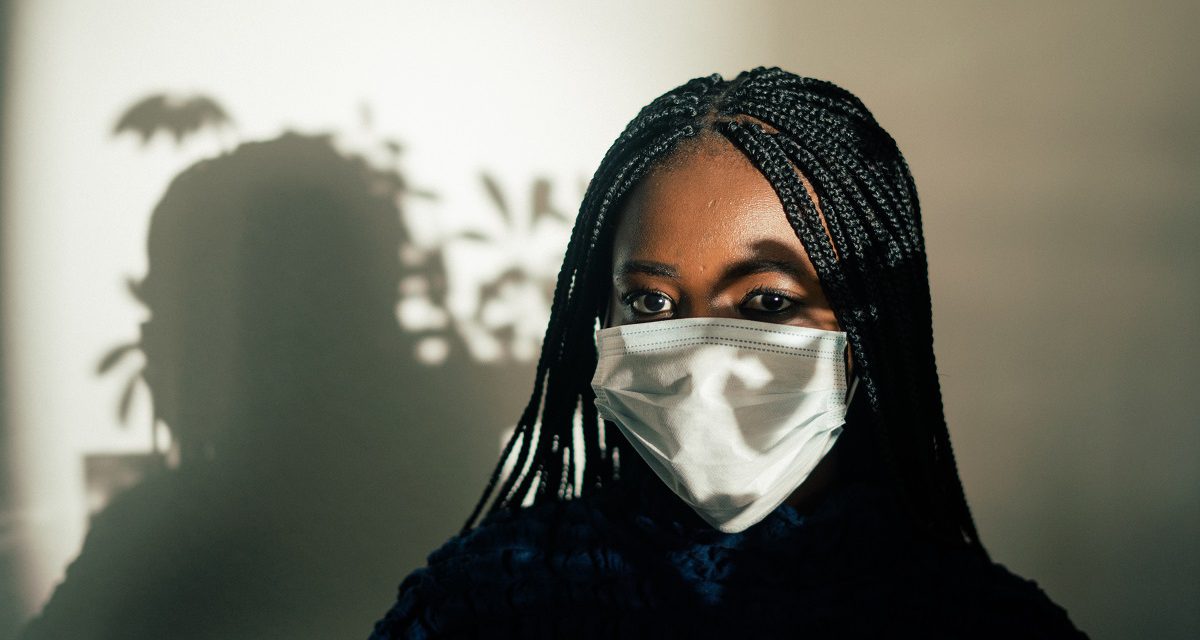By Elena Cleaves
The COVID-19 pandemic and the resulting isolation requirements, economic recession, and record unemployment rates are creating a perfect storm for increased reports of worsened mental health, substance use, and suicidal ideation. Safety guidelines for the pandemic including self-quarantining, social distancing, and limited essential-only travel keep people anxiously sitting at home as the death toll climbs, recently surpassing 200,000 in the United States alone. Social isolation and loneliness are linked to poor mental health and increased risk of suicide and recent data shows higher shares of people sheltering in place reporting negative mental health effects than those not staying home.
Isolation and stay-at-home orders amidst a pandemic also breed several behavioral problems including increased substance use, more frequent opportunities for domestic and social violence, and reduced access to emergency and health services, potentially limiting the chances of intervention before fatal consequences. People with pre-existing mental health conditions or substance use disorder (SUD) and those who have experienced violence are particularly vulnerable in an emergency and have a higher risk of suicide. An analysis by Well Being Trust and the Robert Graham Center for Policy Studies projects that an additional 75,000 deaths due to suicide and alcohol or drug misuse may occur by 2029.
According to the CDC, younger adults, racial/ethnic minorities, essential workers, and unpaid adult caregivers are also disproportionately affected, likely due to increased stress from social factors including racial injustice, fear of exposure to the virus, and loss of income and/or health insurance.
The CDC also found reports of increased substance use and serious suicidal thoughts in the last 30 days were higher amongst Black respondents than white and Asian respondents. Black people are witnessing traumatic displays of systemic racism and injustice on a global stage as police brutality protests continue, most recently following the abhorrent results of the Breonna Taylor case. Witnessing police commit murder and not be held accountable time and time again has undoubtedly played a part in Black communities experiencing worsened mental health conditions.
Essential workers represent another group whose mental health conditions have been disproportionately affected. Increased substance use and suicidal ideation were more prevalent among employed respondents than unemployed, and among essential than nonessential. This can be linked to various factors including fear of exposure to the virus, worsened by a shortage of PPE for health care workers in some places. Health care providers in China during the outbreak reported “feelings of depression, anxiety, and overall psychological burden,” especially amongst nurses, women, and providers directly involved in treating COVID-19 patients. Physicians experiencing burnout are also at higher risk of depression, substance use, and suicide.
Unpaid caregivers staying home are at a similarly increased risk as well as younger children (18 and under) or older adults (65 and up) being cared for. Despite being less likely to report negative mental health impacts due to worry about the Coronavirus, recent polls still show an increase in these negative impacts among older adult respondents who did report. Older adults are already prone to poor mental health, particularly depression, due to loneliness and bereavement, both of which can be exacerbated by the pandemic. Prevalence of depression is higher in older adults who require home care and is often misdiagnosed and mistreated. Suicidal ideation is an especially large concern among older adults during COVID-19 as they accounted for nearly one out of five suicide deaths in the U.S. in 2018.
While older white males experience the highest rate of suicide in the U.S., they are less likely to report mental health issues than their female counterparts. A poll conducted in July found that women more often report worsened mental health due to worry about the Coronavirus as well as symptoms of anxiety and depression. This is especially true of women with children under the age of 18 affected by closures of schools and childcare centers. Spouses and children spending more time in the house together amidst disrupted routines and financial insecurity also allows more opportunities for violence, further increasing risk of mental health issues, suicidal ideation, and death.
People with pre-existing mental or physical health issues and/or substance use disorder (SUD) are at the highest risk for these negative impacts due to the pandemic. A recent study warns that “COVID-19 and addiction are the two pandemics which are on the verge of collision causing major public health threat.” Complications from various substance addictions including alcohol, cigarettes and vapes, and opioids increase risk of contracting COVID-19 and worsening effects of the virus. The study examines the intersections at which the physical, societal, and behavioral impacts of the pandemic, cycles of substance use, increased stress, and loss of access to health care meet.
A number of stressors causing people, especially in marginalized communities, to begin or continue substance use are listed including “prolonged home confinement, depression and panic due to unknown nature of the disease, fear of contracting infection, vulnerability, work from home, anxiety regarding low income, and fear of losing jobs.” Addictive substances provide cheap and simple, albeit temporary, relief to distress. Surges of addictive behaviors have been reported during this period as well as increased withdrawal emergencies and death due to a lack of access to healthcare services, resulting in users procuring drugs illegally. A recent study found that “13.3% of adults reported a new or increased substance use as a way to manage stress due to the coronavirus and 10.7% of adults reported thoughts of suicide in the past 30 days.”
As economic, social, and racial issues continue to rise along with the pandemic’s death toll, people with SUD will face difficulty safely recovering. Opioid users face a particularly daunting set of challenges due to greater marginalization, trouble accessing specific health care, imposed restrictions on drugs, closure of deaddiction centers, increased risk of life-threatening withdrawal, and usage of illicit opiates. Fear of overdosage looms over potential solutions to mitigate these obstacles, especially as addicts may misinterpret COVID-19 symptoms as signs of withdrawal and self-administer, possibly fatally.
Recovery from substance abuse is a long-lasting, multiple-step process. Accessing facilities providing support and intervention has proven difficult during COVID-19. Even after recovery, addicts may discover newly available substitutes to replace or join other vices, administering the same relief and thus creating a new addiction in a vicious cycle. Stigmas surrounding people with SUD can also prevent them from seeking or receiving help, especially if isolated or quarantined alone or in a violent household.
Despite the challenges and tragedies caused by the pandemic, it also brought some positive changes. Mental health providers have increased telehealth services, allowing patients to continue treatment from a safe distance. Many companies also went virtual and allowed employees to work from home during shutdowns, including some who announced they will keep the telework option open through at least the end of the year. While these are both landmark improvements, especially for people with disabilities who have been addressing accommodations like these for years, they pale in comparison to the road ahead. Telehealth options may help some mental health patients, but providers are overwhelmed by the increase in those seeking help during COVID-19 and are struggling to keep up. Domestic violence shelters are also overflowing and running low on resources as victims of abusive households seek safety.
The CDC suggests that future studies look for drivers of negative impacts on mental and behavioral health throughout the pandemic and whether factors such as social isolation, absence of school structure, unemployment and other financial worries, and various forms of violence serve as additional stressors. They further recommend community-driven intervention and prevention efforts to address stress from experiencing racial discrimination, promoting social justice, and supporting people at risk for suicide. Amidst the worldwide conversation surrounding police brutality, advocates are calling to defund and abolish police and the prison system and to reallocate those funds into community alternatives for support. Funds currently allocated for police could instead be invested into homeless and domestic violence shelters, mental health and SUD services, education to promote racial equality and destigmatize substance use, and more.
Several countries issued various relief packages to their citizens to financially assist with physical and mental health concerns and unemployment. While the U.S. falls among the middle of the pack in terms of relief value, failure to control the virus early on has resulted in continuous financial and emotional turmoil for many Americans that has yet to be relieved. Coronavirus deaths in the country continue to stack up while representatives in the Senate use proposed pandemic relief bills as petty pawns for their respective party’s political agenda prior to the upcoming November election. The U.S. government’s lack of leadership shown by intentionally downplaying a virus and failing to control it or provide sufficient aid to its people proves astounding cowardice on their part and sets an expectation for what Americans must demand in the future.
For the deadly cycle of worsened mental health, increased suicidal ideation, and increased substance use to cease, government and legislative bodies must do their part to protect every citizen, especially those disproportionately at risk. An efficient and science-driven plan to control and fight COVID-19 must be America’s priority alongside a continued demand for racial justice and accessibility to mental health, harm-reduction, and deaddiction services. As stated in COVID-19 and Addiction, “If a nation has to recover from this disastrous pandemic, the special need for the marginalized strata of the society must be addressed with the utmost care.”








